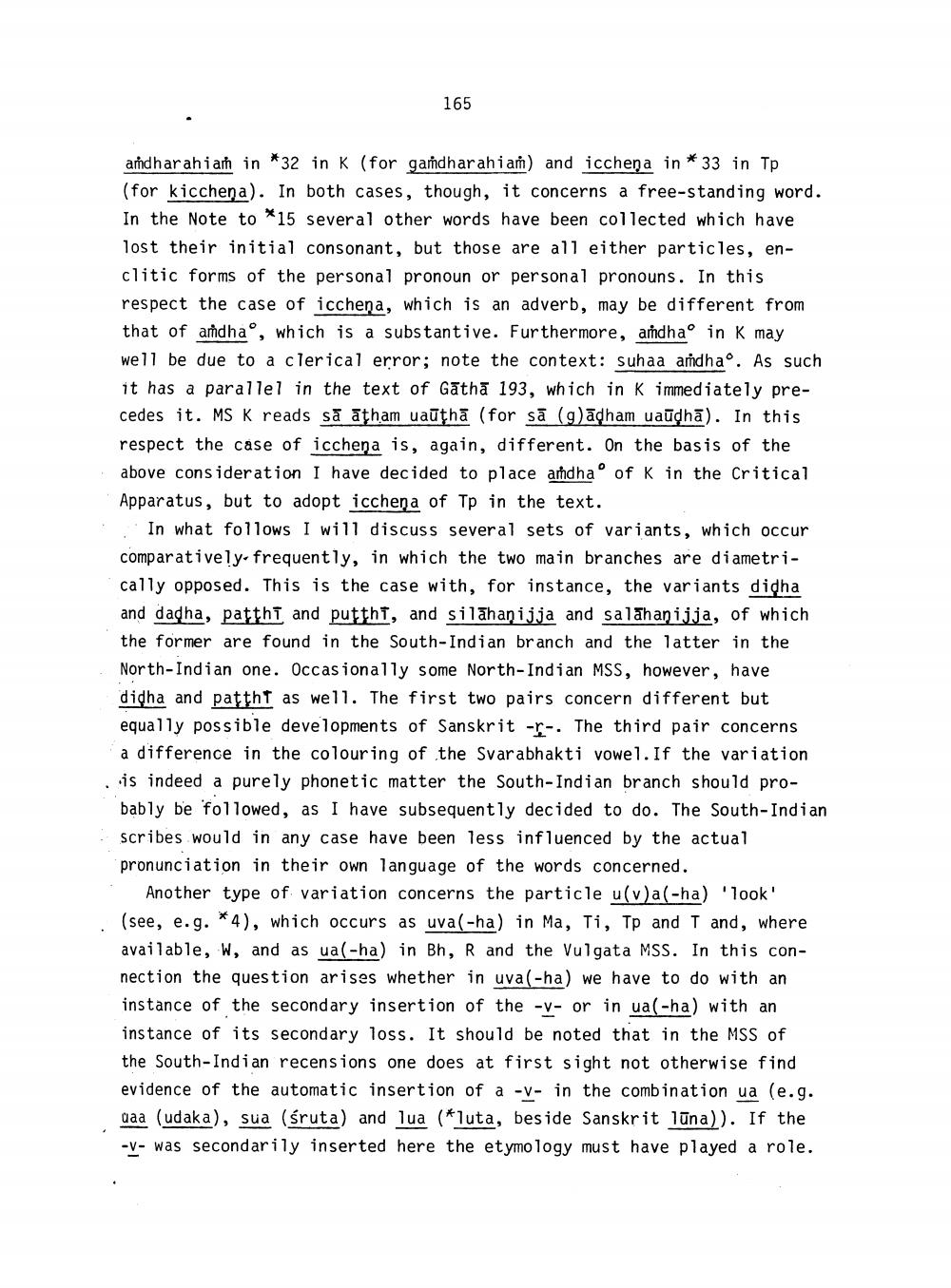________________
165
aṁdharahian in *32 in K (for gamdharahian) and icchena in * 33 in Tp (for kicchena). In both cases, though, it concerns a free-standing word. In the Note to *15 several other words have been collected which have lost their initial consonant, but those are all either particles, enclitic forms of the personal pronoun or personal pronouns. In this respect the case of icchena, which is an adverb, may be different from that of aħdhao, which is a substantive. Furthermore, amdhao in k may well be due to a clerical error; note the context: suhaa aṁdhao. As such it has a parallel in the text of Gathā 193, which in K immediately precedes it. MS K reads să ațham uaūthū (for sā (9)ādham uaūdhā). In this respect the case of icchena is, again, different. On the basis of the above consideration I have decided to place adhao of k in the critical Apparatus, but to adopt iccheņa of Tp in the text.
In what follows I will discuss several sets of variants, which occur comparatively, frequently, in which the two main branches are diametrically opposed. This is the case with, for instance, the variants didha and dadha, patthi and puttht, and silahaņijja and salahanijja, of which the former are found in the South-Indian branch and the latter in the North-Indian one. Occasionally some North-Indian MSS, however, have didha and pattht as well. The first two pairs concern different but equally possible developments of Sanskrit -r-. The third pair concerns a difference in the colouring of the Svarabhakti vowel. If the variation is indeed a purely phonetic matter the South-Indian branch should probably be followed, as I have subsequently decided to do. The South-Indian scribes would in any case have been less influenced by the actual pronunciation in their own language of the words concerned.
Another type of variation concerns the particle u(v)a(-ha) 'look' (see, e.g. *4), which occurs as uva(-ha) in Ma, Ti, Tp and T and, where available, w, and as ua(-ha) in Bh, R and the Vulgata MSS. In this connection the question arises whether in uva(-ha) we have to do with an instance of the secondary insertion of the -v- or in ua(-ha) with an instance of its secondary loss. It should be noted that in the MSS of the South Indian recensions one does at first sight not otherwise find evidence of the automatic insertion of a -v- in the combination ua (e.g. uaa (udaka), sua (śruta) and lua (*luta, beside Sanskrit lūna)). If the -v- was secondarily inserted here the etymology must have played a role.




